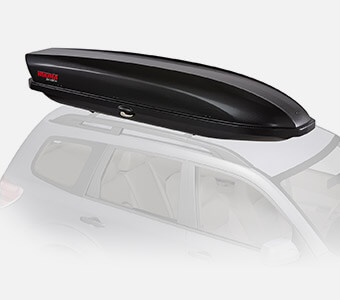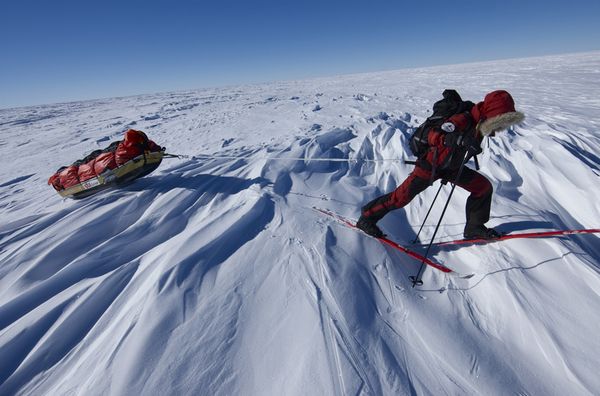Topic
Just musing out loud & thinking outside the box.
Forum Posting
A Membership is required to post in the forums. Login or become a member to post in the member forums!
Home › Forums › General Forums › Winter Hiking › Just musing out loud & thinking outside the box.
- This topic has 32 replies, 9 voices, and was last updated 8 years, 11 months ago by
 Franco Darioli.
Franco Darioli.
-
AuthorPosts
-
Feb 11, 2016 at 7:26 pm #3381562
Anonymous
InactiveHi Thomas,
Good points, and ones i have thought about, especially after reading the article that Alpo shared recently. If i was to do this idea, i would do a combo of foam and breathable fabrics/insulation.
I like the basic design of the pulk shelter that Cameron McPherson Smith used, but i would modify it. So for the top, instead of fiber glass, i would use a combo of 1 oz cuben fiber (inner) and 1.4 oz silnylon outer sleeve to put foam panels in, over a carbon fiber frame.
But, it would have larg’ish vents with breathable fabric and Apex insulation. For the breathable fabric, i would probably use woven polypropylene of some sort.
The sides would be an insulated fabric blend, similar to the venting on top, but tougher/stronger shell material (DWR treated nylon of some kind), again with Apex inner.
I would use a VBL while sleeping. Not sure if i would use a heater or not. I think if done right, and not only insulated, but with a IR reflecting material on the bottom and on most of the top, candles plus body heat would keep it noticeably warmer than the outer temp.
I would expect there to be some moisture build up even then, but more manageable than say what Cameron experienced. It’s hard to say, because it’s not specifically mentioned, but it sounds like the fabric material they used on the side, wasn’t breathable. Then Cameron says the vents that were put in, were too small.
If you read that article that Alpo shared, you will see that this idea has been successfully implemented and tested, though it was not ideal (though in many ways, better than a tent). The basic idea/concept holds a lot of promise, just needs to be modified.
Feb 11, 2016 at 9:39 pm #3381579“I like the basic design of the pulk shelter that Cameron McPherson used, but i would modify it. So for the top, instead of fiber glass, i would use a combo of 1 oz cuben fiber (inner) and 1.4 oz silnylon outer sleeve to put foam panels in, over a carbon fiber frame”
?
No matter if it is 1 oz Cuben Fiber or 1.4 silnylon, either will shred the first time it rubs/bangs against ice or comes in contact at camp with any hard surface(ice peak,crampons,shovel, trekking pole tips, stove,snow shoe,probe,ice screws…) .
(that is my guess because I never seen anyone attempting that…)Feb 13, 2016 at 8:41 am #3381780Anonymous
InactiveI have a hard time picturing all that contact going on Franco. Yes, pulks can flip, but if i went to Antarctica where’s it’s mostly flat, how often would that be happening? Watching the documentaries i have about Antarctica, i don’t remember seeing or hearing the people doing same, talking about their pulks flipping.
But you may be basically right, i may want a more robust material for the outside for “just in case”. Someone very kindly offered to give me some kevlar fabric, which i could use in an epoxy over a foam composite. I was originally thinking of doing a fiber/epoxy wood and/or foam composite for the flooring, but i could do a thinner, lighter one for the top too.
I’ll point out though, not too long ago, you were strongly poo pooing Dave Thomas’s idea of a pulk shelter in general, and yet come to find out, it’s already been done and tested fairly successfully by a real Arctic type explorer/adventure.
Seems less presupposing might be helpful.
Feb 13, 2016 at 2:27 pm #3381847“I’ll point out though, not too long ago, you were strongly poo pooing Dave Thomas’s idea of a pulk shelter in general,”
No you just twisted words to suit yourself.This was the exchange you are referring to :
Dave’s comment :
So it takes the place of sled, sled bag, sleeping bag, sleeping pad, and tent.Mine :
Yes cooking and melting snow would be a real joy inside something like that.
This is Dave’s full comment :
What if you made a 7-foot long, stitch-and-glue sled/pulk, insulated with an inch or rigid foam? Shaped something like a bigger version of this:
it would be aerodynamic, sturdy, water-tight, and insulated. And here’s the kicker: YOU SLEEP INSIDE OF IT. So it takes the place of sled, sled bag, sleeping bag, sleeping pad, and tent. And what a tent it would make!!! Totally water-proof and wind-proof, you’d need some ventilation scheme, but that could be controlled.
to my comment he replied :
For sure, traditional, cooking-in-the-tent wouldn’t work in a 18-inch-high space mostly filled by human.
that reply makes it clear that he did not have in mind the type suggested later on :

so my reply was not about sleds in general but the specific use of the type Dave suggested .
“Yes, pulks can flip, but if i went to Antarctica where’s it’s mostly flat, how often would that be happening?”
look up sastrugi and wind speeds in Antarctica , also stupid things folk do when really cold and tired *.
(fiddly/delicate/complex stuff is not what you want in the situation no matter how much you are in love with the idea of using “ultralite” gear , multilayers and thinking outside the box. )

*Years ago I helped a mate build a small pulk for his adventure in Alaska, planning for sub 40f temps.
It was made with materials that would not become brittle in those temps , no metals (apart from a couple of heavy duty biners) and very simple to fix .
My mate had undergone intensive survival courses by one of the best military outfits in the world (decades before) yet was very well aware that in those temps it is a challenge to think clearly even for the very best and no he had no intention to die there ( he didn’t and yes his pulk worked)
He slept inside an eVent bivy , next to the pulk.
Feb 14, 2016 at 1:52 pm #3382025Anonymous
InactiveThanks for the clarification–it was less twisting and more generalized memory by that point. And yes, i basically agree with you that a more robust material would probably be better.
Feb 15, 2016 at 7:59 am #3382157Anonymous
InactiveYou could use pretty lightweight materials. I don’t know if they could technically be classified as UL, but if you use a foam core with some Kevlar and a little Carbon fiber epoxied over it, it would be a rather lightweight, and yet strong, robust material all around.
Lightweight does not necessarily equal weak, non durable, etc. Composites are a fascinating field where different properties of different materials compliment and balance out each others weaknesses and strengths.
Composites are essentially, multi layers.
Even Cuben Fiber (dyneema) could be used in a very lightweight epoxy composite as long as it’s an inner or middle layer, and not an outer layer. Cuben Fiber (dyneema) combined with foam/epoxy/kevlar and/or carbon fiber would make a very lightweight but very strong and durable composite.
Feb 16, 2016 at 8:48 am #3382333Anonymous
InactiveFranco talking about helping his mate make a pulk for an Alaska/Arctic trip, “It was made with materials that would not become brittle in those temps , no metals (apart from a couple of heavy duty biners) and very simple to fix .”
Excerpted from a site/article devoted to the properties of various different materials at very low temps:
http://collections.dartmouth.edu/arctica-beta/html/EA02b-02.htmlMost notably, “Aluminum Alloys. Tests and field use of aluminum and its alloyws indicate —
that they are admirably suited for extreme-low-temperature service. Tests
made to subatmospheric temperatures indicate that the tensile, yield, and
impact strengths of all aluminum alloys increase at extreme low temperatures.
Aluminum alloys retain ductility at these temperatures, corrosion resistance
is enhanced, and there is no increase in brittleness. No special precautions
regarding methods of handling at extreme low temperatures are required……Stainless Steel. Chromium-nickel types of stainless steels are especially
well suited for low-temperature applications because their strengths and
toughness properties are improved at extreme low temperatures. Products made
from this material are those requiring toughness and resistance to corrosion
as parachute fittings, shackles, etc.”Seems that some common metals/alloys are actually quite well suited to such applications. Just don’t touch them with bare skin.
Feb 16, 2016 at 2:00 pm #3382398“Just don’t touch them with bare skin.”
Bingo !
That is why it is a good idea to avoid metal zip pulls for example.
Not that they don’t work but you might temporarily forget that you have taken your gloves off and grabbed that zip… -
AuthorPosts
- You must be logged in to reply to this topic.
Forum Posting
A Membership is required to post in the forums. Login or become a member to post in the member forums!
Our Community Posts are Moderated
Backpacking Light community posts are moderated and here to foster helpful and positive discussions about lightweight backpacking. Please be mindful of our values and boundaries and review our Community Guidelines prior to posting.
Get the Newsletter
Gear Research & Discovery Tools
- Browse our curated Gear Shop
- See the latest Gear Deals and Sales
- Our Recommendations
- Search for Gear on Sale with the Gear Finder
- Used Gear Swap
- Member Gear Reviews and BPL Gear Review Articles
- Browse by Gear Type or Brand.






